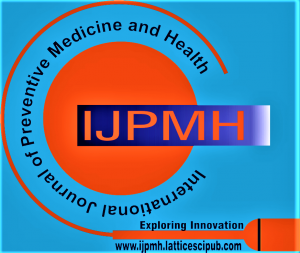![]()
Genetic Predisposition and Pathogenesis in Endometriosis
Amani Rustemagić1, Aida Ombašić2
1Amani Rustemagić, Department of Genetics and Bioengineering, University International Burch University, Sarajevo, Federation of Bosnia and Herzegovina.
2Aida Ombašić, Sarajevo Medical School, University Sarajevo School of Science and Technology, Sarajevo, Federation of Bosnia and Herzegovina.
Manuscript received on 30 June 2025 | First Revised Manuscript received on 09 July 2025 | Second Revised Manuscript received on 17 August 2025 | Manuscript Accepted on 15 September 2025 | Manuscript published on 30 September 2025 | PP: 17-23 | Volume-5 Issue-6 September 2025 | Retrieval Number: 100.1/ijpmh.E111305050725 | DOI: 10.54105/ijpmh.E1113.05060925
Open Access | Ethics and Policies | Cite | Zenodo | OJS | Indexing and Abstracting
© The Authors. Published by Lattice Science Publication (LSP). This is an open access article under the CC-BY-NC-ND license (http://creativecommons.org/licenses/by-nc-nd/4.0/)
Abstract: Endometriosis is a chronic, estrogen-dependent inflammatory disorder defined by the growth of endometrial-like tissue outside the uterus, leading to pain, infertility, and reduced quality of life. Although retrograde menstruation remains the prevailing theory of pathogenesis, it does not fully explain why only some individuals develop the condition. Accumulating evidence highlights a substantial genetic component, with heritability estimates suggesting that approximately 51% of the risk of endometriosis is genetically driven. Genome-wide association studies (GWAS) have identified more than a dozen risk loci, including WNT4, GREB1, FN1, CDKN2B-AS1, and ESR1, which are involved in reproductive tract development, hormone signalling, immune modulation, and cell adhesion. This review synthesizes findings from genetic, epigenetic, and molecular studies to provide an updated understanding of the pathophysiology of endometriosis. In addition to inherited variants, recent discoveries have included epigenetic alterations, such as DNA methylation and microRNA regulation, which influence gene expression in key pathways related to cell proliferation and differentiation. Moreover, somatic mutations found in eutopic endometrial cells and chromosomal instability within lesions suggest a neoplastic-like progression, especially in advanced stages of the disease. Newly validated GWAS loci and polymorphisms in vascular remodelling and oxidative stressrelated genes (e.g., VEGF, MMPs, NAT2) further underscore the multifactorial nature of endometriosis. The purpose of this review is to investigate how genetic predisposition, somatic alterations, and epigenetic mechanisms interact to contribute to lesion development, persistence, and symptom severity. By examining these interconnected pathways, we highlight the current limitations in diagnosis and treatment, and emphasize the urgent need for personalized approaches in clinical care. These insights pave the way for future research to identify biomarkers for earlier diagnosis and to develop individualized therapeutic strategies. A more comprehensive understanding of endometriosis at the molecular level is crucial for advancing precision medicine and enhancing outcomes for women affected worldwide.
Keywords: Endometriosis, Genetic Predisposition, Aetiology, Risk Loci.
Scope of the Article: Reproductive Health
